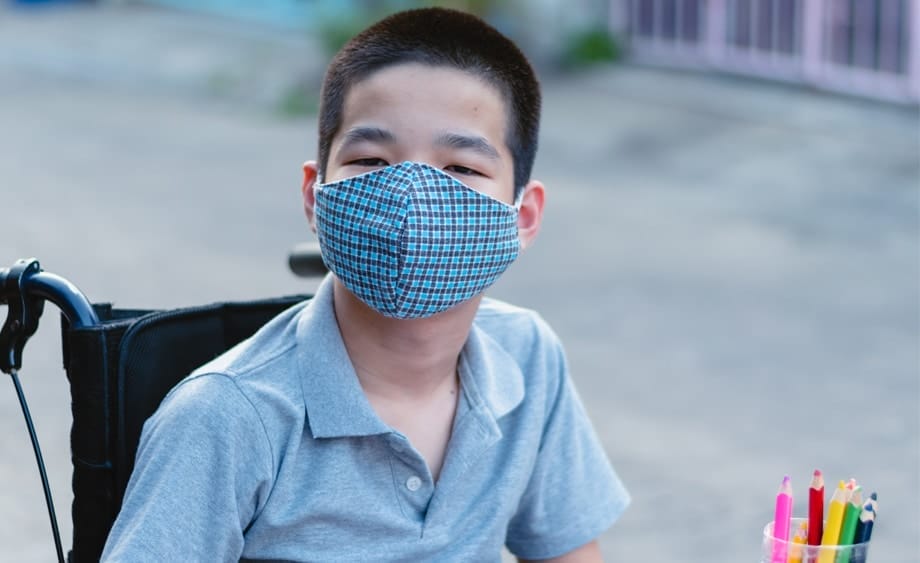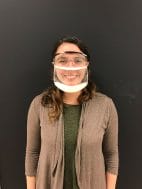Why Choose Us
Learn more about Good Shepherd Rehabilitation Hospital, a destination for recovery for stroke, brain injury, spinal cord injury and complex medical rehabilitation.

Though they have shown to be effective in slowing the spread of COVID-19, wearing face masks in public can be a challenge for families with younger children — especially for parents or caregivers of children with special needs.
“Some parents fear their child, who might have a sensitivity to certain fabrics, loops over the ears or other challenges, will not be able to tolerate wearing a mask in public,” says Amanda Kleckner, DPT, administrative director of Pediatrics at Good Shepherd Rehabilitation Network. “While we know parents and caregivers are trying to minimize their child’s time out in public, some families simply have no choice.”
So, how do parents make it easier to wear a mask for their child?
Don’t wait until you have to go out in public to be the first time your child wears a particular face mask. Rather, plan ahead and start slow.
“If you haven’t left the house yet or it has been a long time since you have ventured out, you can have your child wear a scarf loosely around their face to get used to the general feeling,” says Jennifer Schueck, MS, OTR/L, clinical resource specialist at Good Shepherd Pediatrics. “You can also have your child practice putting a mask on their favorite stuffed animal or action figure.”
But remember: children under the age of 2 are not required to wear masks. Babies, especially, should not wear masks because it can affect their breathing. Some states make exemptions for children and adults with medical conditions who cannot tolerate wearing a mask as well.
Another way to help your child is to model wearing a mask.
Show how you put it on your face. Better yet, let your child put a clean mask on and take it off of you. However, be gentle and do not force them to put the mask to their face. Instead, gradually expose them to the mask.
“They might surprise you and start wearing the mask on their own,” Kleckner says.
Offer positive reinforcement if your child tries the mask on.
“Praise, high fives, hugs and other supportive reactions from parents may help them feel more comfortable with the entire process,” Schueck says.
If your child has used social stories in the past, there are several available that explain why the coronavirus forces us to protect ourselves and each other via masking. For example, you can review this helpful social story from Autism Services, Education, Resources, and Training Collaborative (ASERT).
Many children are sensitive around their ears. To help, put two buttons on a headband or hat just behind the ears. The mask’s elastic loops can latch onto the buttons, away from sensitive ears.
“You also can try masks with different straps,” Kleckner says. “They might be sensitive to a loop style, but more tolerant of a mask or bandana that ties off in the back.”
Try masks made of different materials. Some materials offer better protection than others, so try different fabrics to see which your child tolerates.
“Think through what types of clothing they like to wear and see if those materials are recommended for masks,” Schueck says.
Check that the mask fits correctly on your child to ensure safety and comfort. Masks should always securely cover the nose and mouth.

Team members at Good Shepherd Pediatrics wear masks with clear mouths specifically for children who need it as part of their therapy.
“The clear-mouth masks make the experience much more accessible, particularly for those with hearing impairments,” Kleckner says.
For more information on masks, visit the Pennsylvania Department of Health website. For more information about Good Shepherd’s enhanced protocols for in-person rehabilitation care, visit our safety precautions overview.
In-person and telehealth outpatient appointments are available at Good Shepherd Pediatrics. Request your in-person or virtual visit online, call 1-888-44-REHAB or use our live chat.